Dillenburg on:
[Wikipedia]
[Google]
[Amazon]
Dillenburg, officially Oranienstadt Dillenburg, is a town in Hesse's
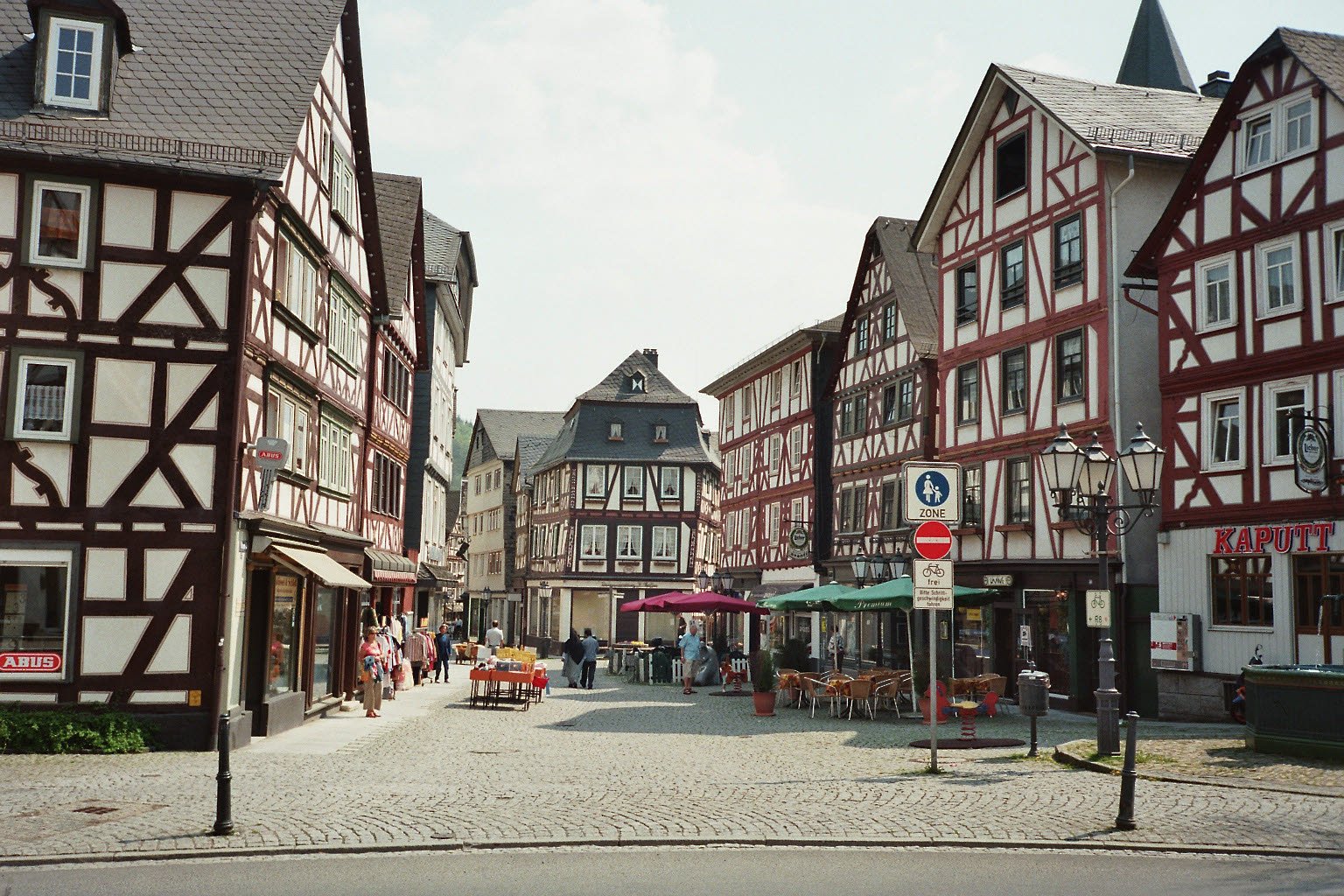
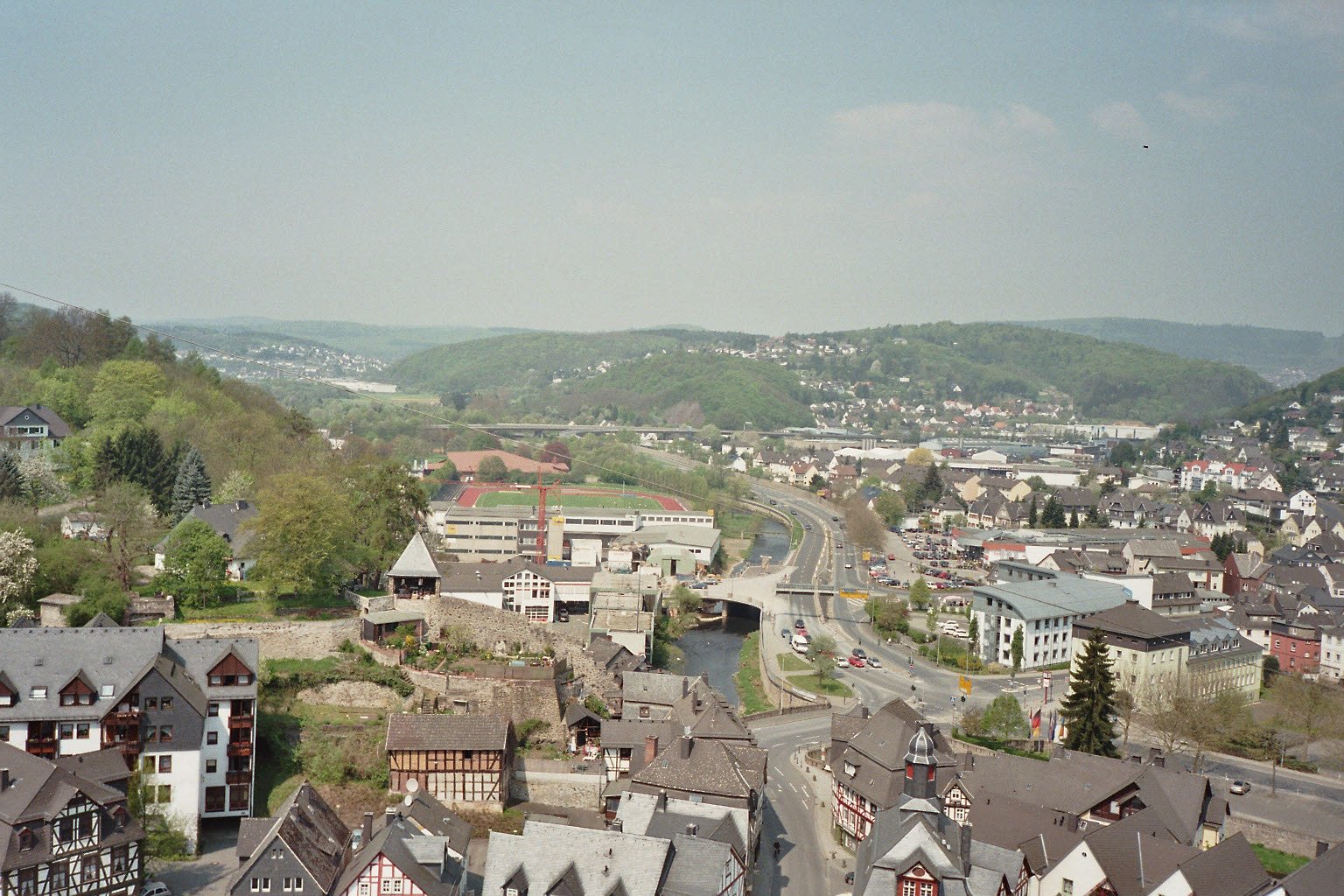

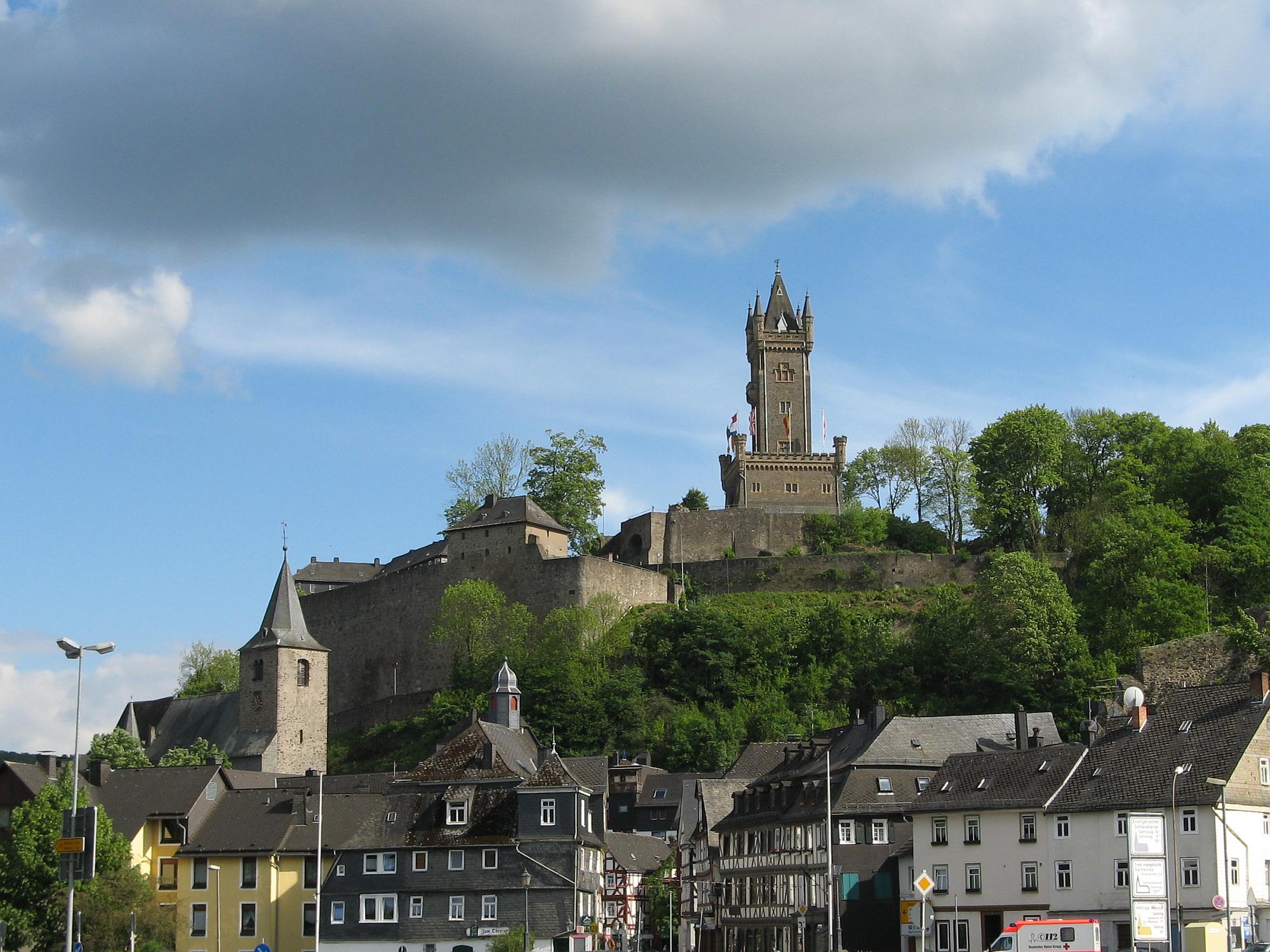
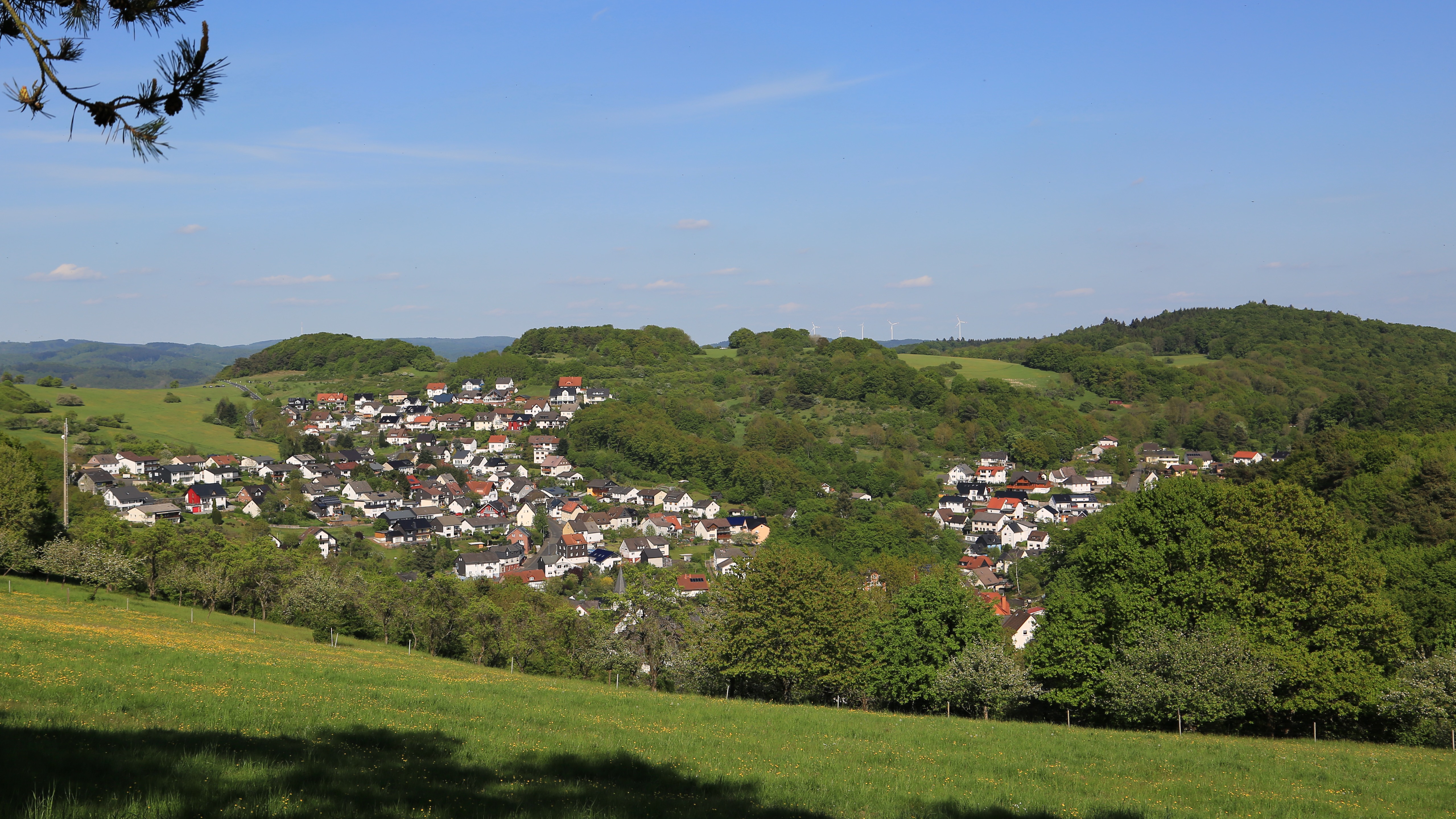





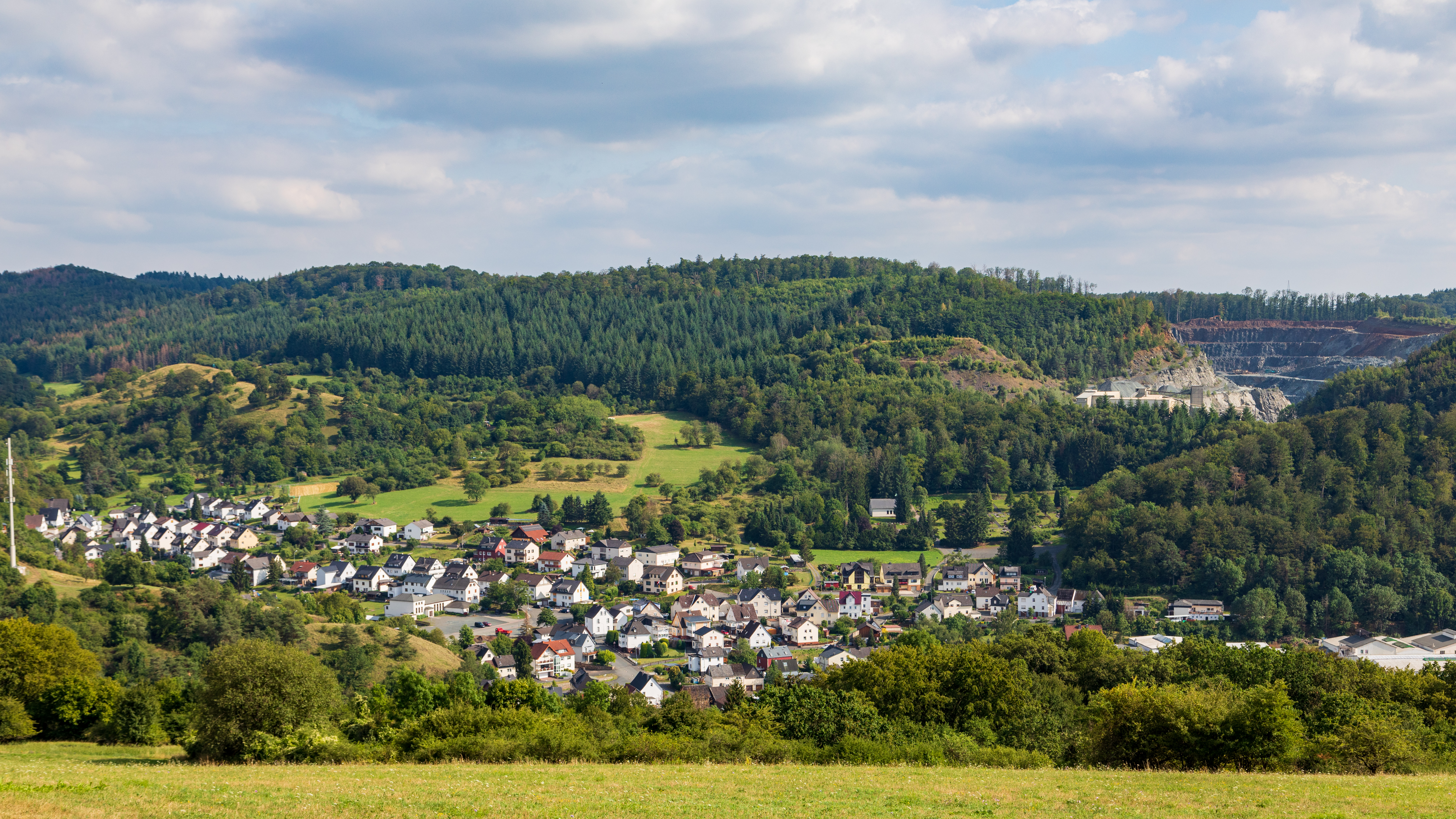
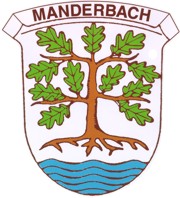 Manderbach had its first documentary mention in 1225, making it older than the main town of Dillenburg (1254). The two former villages – nowadays parts of Dillenburg – Frohnhausen and Manderbach, had much in common in their early history. Here the two noble families von Hunsbach and von Selbach both held sway. As in Frohnhausen, there was also a great fire in Manderbach – albeit 148 years before Frohnhausen's – which, having been started by a
Manderbach had its first documentary mention in 1225, making it older than the main town of Dillenburg (1254). The two former villages – nowadays parts of Dillenburg – Frohnhausen and Manderbach, had much in common in their early history. Here the two noble families von Hunsbach and von Selbach both held sway. As in Frohnhausen, there was also a great fire in Manderbach – albeit 148 years before Frohnhausen's – which, having been started by a
 * ''Wilhelmsturm'' (tower) with the Orange-Nassau Museum
* "Villa Grün" museum of economic history
* The "Casemates", old defensive structures.
* ''Hessisches Landgestüt'' (≈ Hessian State Stud Farm) with coach museum in the Orangery. "Living Museum" about the
* ''Wilhelmsturm'' (tower) with the Orange-Nassau Museum
* "Villa Grün" museum of economic history
* The "Casemates", old defensive structures.
* ''Hessisches Landgestüt'' (≈ Hessian State Stud Farm) with coach museum in the Orangery. "Living Museum" about the

 * ''Wilhelmsturm'' (tower) built in 1872 - 1875
* The "Casemates", old defensive structures.from the 16th century
* The Evangelische Town Church from 1491
* The ''Dillturm'' (tower) from 1597
* The old rectory from 1531–1533
* The ''Untertor'' (Lower Gate) from 1344 (alterations in 1594 and 1737)
* Manderbach Church
* ''Wilhelmsturm'' (tower) built in 1872 - 1875
* The "Casemates", old defensive structures.from the 16th century
* The Evangelische Town Church from 1491
* The ''Dillturm'' (tower) from 1597
* The old rectory from 1531–1533
* The ''Untertor'' (Lower Gate) from 1344 (alterations in 1594 and 1737)
* Manderbach Church
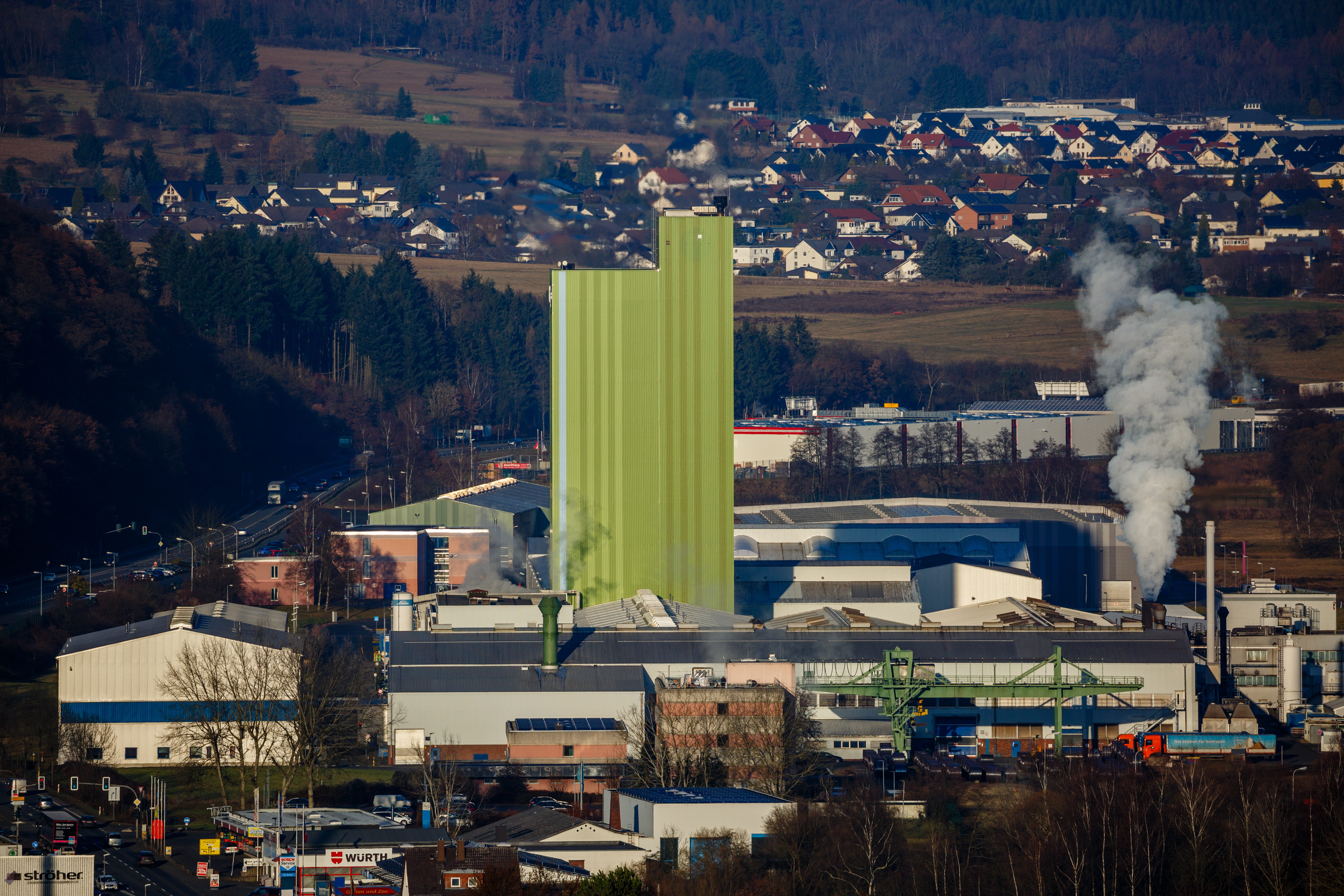
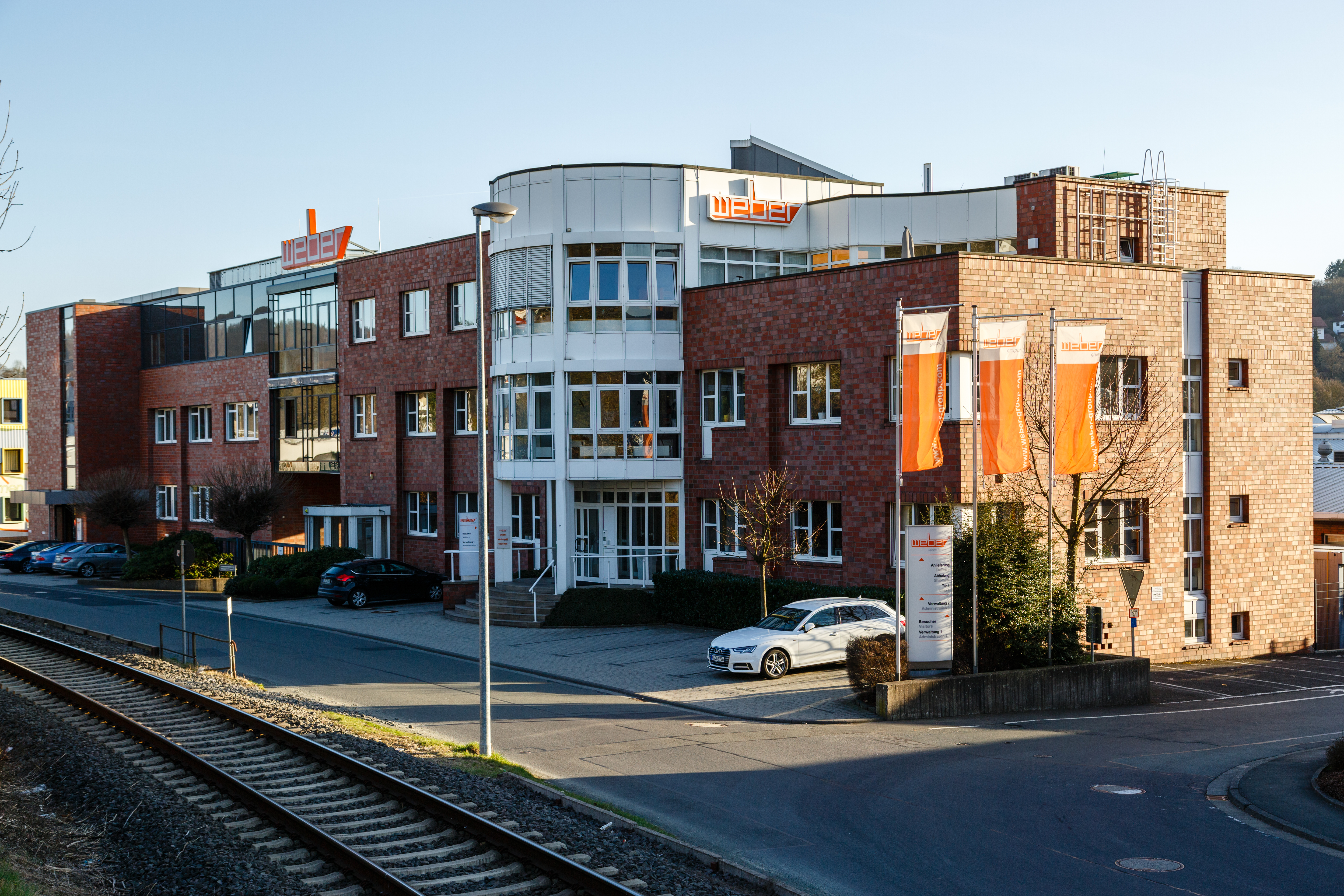 *
*
 * Gewerbliche Schulen (
* Gewerbliche Schulen (
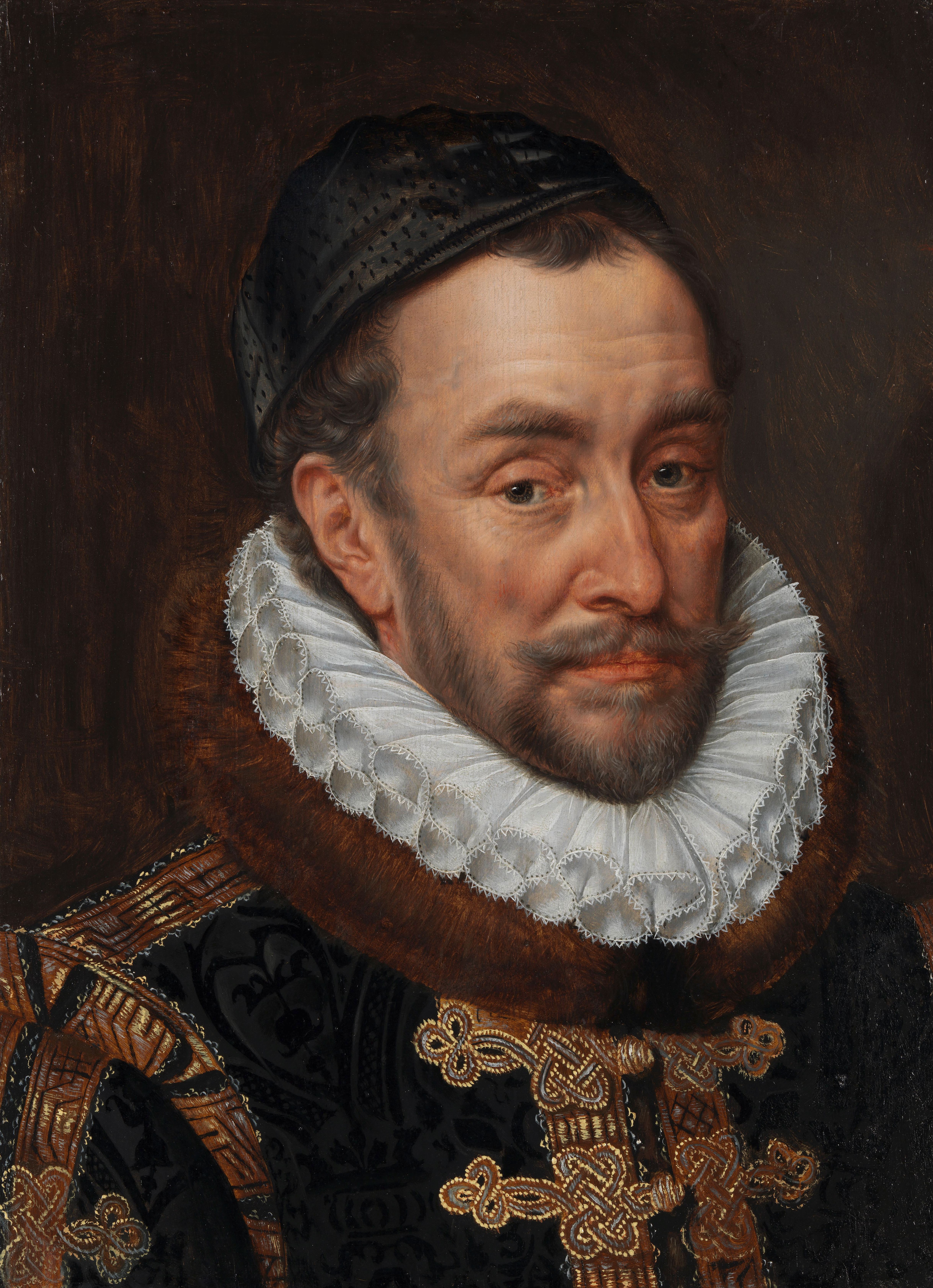 *
*
Dillenburg
Website about Dillenburg railway station and railway guide line 445
Dillenburg fire station
Nanzenbach
* {{Authority control Lahn-Dill-Kreis History of forestry education Burial sites of the House of Nassau-Siegen People from Dillenburg
Gießen
Giessen, spelled Gießen in German (), is a town in the German state (''Bundesland'') of Hesse, capital of both the district of Giessen and the administrative region of Giessen. The population is approximately 90,000, with roughly 37,000 univer ...
region in Germany
Germany, officially the Federal Republic of Germany (FRG),, is a country in Central Europe. It is the most populous member state of the European Union. Germany lies between the Baltic and North Sea to the north and the Alps to the sou ...
. The town was formerly the seat of the old Dillkreis district, which is now part of the Lahn-Dill-Kreis
Lahn-Dill is a ''Kreis'' (district) in the west of Hesse, Germany. Neighboring districts are Siegen-Wittgenstein, Marburg-Biedenkopf, Gießen, Wetteraukreis, Hochtaunuskreis, Limburg-Weilburg, Westerwaldkreis.
History
The southern district bel ...
.
The town lies on the German-Dutch
Dutch commonly refers to:
* Something of, from, or related to the Netherlands
* Dutch people ()
* Dutch language ()
Dutch may also refer to:
Places
* Dutch, West Virginia, a community in the United States
* Pennsylvania Dutch Country
People E ...
holiday road called the Orange Route The Orange Route ( nl, Oranje-Route, german: Oranier-Route) is a holiday route, that runs from Amsterdam in the Netherlands through North and Central Germany and returns to Amsterdam. It is 2,400 kilometres long and crosses the Netherlands and nine ...
, joining towns, cities and regions associated with the House of Orange-Nassau
The House of Orange-Nassau ( Dutch: ''Huis van Oranje-Nassau'', ) is the current reigning house of the Netherlands. A branch of the European House of Nassau, the house has played a central role in the politics and government of the Netherland ...
, as well as on the German Timber-Frame Road
The German Timber-Frame Road (German: ''Deutsche Fachwerkstraße'') is a German tourist route leading from the river Elbe in the north to the Black Forest and Lake Constance in the south. Numerous cities and towns each with examples of the vernac ...
and the Rothaarsteig
The Rothaarsteig is a 154.80 km long hiking trail along the crest of the Rothaargebirge mountain range in Germany in the border region between the states of North Rhine-Westphalia (NW) and Hesse (HE). It was opened in 2001.
Overview
T ...
hiking
Hiking is a long, vigorous walk, usually on trails or footpaths in the countryside. Walking for pleasure developed in Europe during the eighteenth century.AMATO, JOSEPH A. "Mind over Foot: Romantic Walking and Rambling." In ''On Foot: A His ...
trail.
Geography
Location
Dillenburg lies on the eastern edge of theWesterwald
The Westerwald (; literally 'Western forest') is a low mountain range on the right bank of the river Rhine in the German federal states of Rhineland-Palatinate, Hesse and North Rhine-Westphalia. It is a part of the Rhenish Massif ( or Rhenish ...
range in the narrow valley of the river Dill
Dill (''Anethum graveolens'') is an annual plant, annual herbaceous, herb in the celery family Apiaceae. It is the only species in the genus ''Anethum''. Dill is grown widely in Eurasia, where its leaves and seeds are used as a herb or spice fo ...
, which flows from Hesse-Westphalia border to Wetzlar
Wetzlar () is a city in the state of Hesse, Germany. It is the twelfth largest city in Hesse with currently 55,371 inhabitants at the beginning of 2019 (including second homes). As an important cultural, industrial and commercial center, the un ...
, emptying into the Lahn
The Lahn is a , right (or eastern) tributary of the Rhine in Germany. Its course passes through the federal states of North Rhine-Westphalia (23.0 km), Hesse (165.6 km), and Rhineland-Palatinate (57.0 km).
It has its source in ...
.











Neighbouring communities
Dillenburg borders in the north on the community ofEschenburg
Eschenburg is a municipality in the Lahn-Dill-Kreis in Hesse, Germany. The community inherited its name from nearby Eschenburg mountain.
Geography
About 20 km², or 43.8%, of the municipal area is wooded, 9.85 km² of this being munici ...
, in the east on the community of Siegbach
Siegbach is a municipality in the Lahn-Dill-Kreis in Hesse, Germany.
Geography
Location
The community of Siegbach lies in the Lahn-Dill Highland in the valley of its namesake brook, the Siegbach, which empties into the Aar to the south at ...
, in the south on the town of Herborn, and the community of Breitscheid, and in the west on the town of Haiger
Haiger is a country town in the Lahn-Dill-Kreis in Hesse, Germany. The nearest city is Siegen, about 25 km north of Haiger.
Geography
Location
Haiger lies about 5 km west of Dillenburg, and 20 km southeast of Siegen on the eastern ...
(all in the Lahn-Dill-Kreis).
Constituent communities
Dillenburg is divided into the centres of Donsbach, Eibach, Frohnhausen, Manderbach, Nanzenbach, Niederscheld and Oberscheld.Donsbach
Donsbach lies approximately 4 km southwest of the Dillenburg main town.Eibach
Eibach has some 1,450 inhabitants. The village, whose livelihood was once based onmining
Mining is the extraction of valuable minerals or other geological materials from the Earth, usually from an ore body, lode, vein, seam, reef, or placer deposit. The exploitation of these deposits for raw material is based on the economic ...
, lies among the other constituent communities of Nanzenbach, Oberscheld and Niederscheld. Its healing spring
Spring(s) may refer to:
Common uses
* Spring (season), a season of the year
* Spring (device), a mechanical device that stores energy
* Spring (hydrology), a natural source of water
* Spring (mathematics), a geometric surface in the shape of a h ...
, whose water is heavy with iron
Iron () is a chemical element with symbol Fe (from la, ferrum) and atomic number 26. It is a metal that belongs to the first transition series and group 8 of the periodic table. It is, by mass, the most common element on Earth, right in ...
, makes the village a favourite among locals. At Easter
Easter,Traditional names for the feast in English are "Easter Day", as in the '' Book of Common Prayer''; "Easter Sunday", used by James Ussher''The Whole Works of the Most Rev. James Ussher, Volume 4'') and Samuel Pepys''The Diary of Samuel ...
time, it is decorated.
Frohnhausen
With roughly 3,900 inhabitants, Frohnhausen is the largest of the constituent communities after the main town of Dillenburg.Manderbach
Manderbach lies on a sunnyplateau
In geology and physical geography, a plateau (; ; ), also called a high plain or a tableland, is an area of a highland consisting of flat terrain that is raised sharply above the surrounding area on at least one side. Often one or more sides ...
3 km north of the main town of Dillenburg.
Nanzenbach
Nanzenbach lies approximately 6 km north of the main town of Dillenburg. The tallest mountain of Dillenburg, theEschenburg
Eschenburg is a municipality in the Lahn-Dill-Kreis in Hesse, Germany. The community inherited its name from nearby Eschenburg mountain.
Geography
About 20 km², or 43.8%, of the municipal area is wooded, 9.85 km² of this being munici ...
at an elevation of 589 m, is part of the Nanzenbach area.
Niederscheld
Niederscheld is a village with about 3000 inhabitants, lying 2 km from the main town of Dillenburg. The name comes from a small brook called the Schelde that rises between Oberscheld and Tringenstein and flows into the Dill at Niederscheld. The village's greatest hallmarks are the oldblast furnace
A blast furnace is a type of metallurgical furnace used for smelting to produce industrial metals, generally pig iron, but also others such as lead or copper. ''Blast'' refers to the combustion air being "forced" or supplied above atmospheric p ...
and the Adolfshütte industrial park
An industrial park (also known as industrial estate, trading estate) is an area zoned and planned for the purpose of industrial development. An industrial park can be thought of as a more "heavyweight" version of a business park or office park ...
. Towards the end of the Second World War
World War II or the Second World War, often abbreviated as WWII or WW2, was a world war that lasted from 1939 to 1945. It involved the World War II by country, vast majority of the world's countries—including all of the great power ...
, the village suffered comparatively heavy damage from Allied air raids.
Niederscheld had been appointed a target, because parts for the V-2 rocket
The V-2 (german: Vergeltungswaffe 2, lit=Retaliation Weapon 2), with the technical name '' Aggregat 4'' (A-4), was the world’s first long-range guided ballistic missile. The missile, powered by a liquid-propellant rocket engine, was develop ...
were built at the Adolfshütte.
Oberscheld
Oberscheld is a village with about 2000 inhabitants, it is the neighbour village from Niederscheld. The Mining was quite important for Oberscheld, there was a blast furnace, the blast furnace was closed in 1969. Oberscheld had a station, the last train ran in Oberscheld in 1987.History
Dillenburg had its first documentary mention in 1254. Dillenburg was the ancestral seat of the Orange branch of theHouse of Nassau
The House of Nassau is a diversified aristocratic dynasty in Europe. It is named after the lordship associated with Nassau Castle, located in present-day Nassau, Rhineland-Palatinate, Nassau, Rhineland-Palatinate, Germany. The lords of Nassau w ...
. Dillenburg Castle
Castle Dillenburg, in the provincial town of Dillenburg in Hesse-Nassau, is situated on a hill (elevation 958 feet) above the Dill river, 25 miles northwest from Gießen on the Giessen-Troisdorf railway line.
The main building of the old castle w ...
was built on top of the peak now called the Schlossberg in the late 13th or early 14th century. There are no pictures of this castle, however, as it was wooden, and was destroyed in the Dernbacher Feud The Dernbach Feud ( German: ''Dernbacher Fehde'') was an over 100-year-long (c. 1230 – 1333) ongoing dispute in present-day Germany between the House of Nassau, several knightly families, and the Landgrave of Hesse. The conflict erupted mainly ...
.
From his stately home in exile, William I of Orange-Nassau
William the Silent (24 April 153310 July 1584), also known as William the Taciturn (translated from nl, Willem de Zwijger), or, more commonly in the Netherlands, William of Orange ( nl, Willem van Oranje), was the main leader of the Dutch Re ...
, who was born in Dillenburg, organized the Dutch resistance against Spain
, image_flag = Bandera de España.svg
, image_coat = Escudo de España (mazonado).svg
, national_motto = '' Plus ultra'' ( Latin)(English: "Further Beyond")
, national_anthem = (English: "Royal March")
, ...
(1567–1572), which still occasions regular Dutch royal visits to the town to this day. The land was administered by the presidents of the House of Nassau-Dillenburg. One of the last presidents was Georg Ernst Ludwig Freiherr von Preuschen von und zu Liebenstein (born 1727 in Diethardt; died 1794 in Bad Ems
Bad Ems () is a town in Rhineland-Palatinate, Germany. It is the administrative seat of the Rhein-Lahn rural district and is well known as a spa on the river Lahn. Bad Ems is the seat of the '' Verbandsgemeinde'' (administrative community) ...
). In the Seven Years' War
The Seven Years' War (1756–1763) was a global conflict that involved most of the European Great Powers, and was fought primarily in Europe, the Americas, and Asia-Pacific. Other concurrent conflicts include the French and Indian War (1754– ...
, the stately home was destroyed (1760), and Wilhelmstraße (a street) was built out of the remains.
In 1797, one of the earliest schools of forestry in Europe, founded a decade earlier at Hungen
Hungen () is a town in the district of Gießen, in Hesse, Germany. It is situated 20 km southeast of Gießen, and 18 km northeast of Friedberg. Surrounding towns are Laubach to the north, Nidda to the east, Wölfersheim to the south ...
by Georg Ludwig Hartig
Georg Ludwig Hartig (September 2, 1764 – February 2, 1837) was a German forester.
Education
Hartig was born at Gladenbach, in present-day Hesse. After obtaining a practical knowledge of forestry from his uncle at Harzburg, he studied from ...
, was moved to Dillenburg. It continued in Dillenburg until 1805, when Hartig lost his position as Inspector of Forests for the Prince of Orange-Nassau, when the principality was dissolved by Napoleon.
In 1875, the Wilhelmsturm (tower), views from which can be seen in this article, was completed on the Schlossberg. It is today the town's landmark. The "casemates" under the former stately home are among the biggest defensive works in Europe
Europe is a large peninsula conventionally considered a continent in its own right because of its great physical size and the weight of its history and traditions. Europe is also considered a subcontinent of Eurasia and it is located enti ...
. They have been partly excavated and may be toured.
In the 19th century came the Industrial Revolution
The Industrial Revolution was the transition to new manufacturing processes in Great Britain, continental Europe, and the United States, that occurred during the period from around 1760 to about 1820–1840. This transition included going f ...
with the building of the Deutz–Gießen railway
The Deutz–Gießen railway is a line between Deutz and Gießen that was built from the late 1850s to connect the Ruhr and the Rhine-Main area, now parts of the German states of North Rhine-Westphalia and Hesse. The line still exists, but little t ...
and the use of iron ore
Iron ores are rocks and minerals from which metallic iron can be economically extracted. The ores are usually rich in iron oxides and vary in color from dark grey, bright yellow, or deep purple to rusty red. The iron is usually found in the ...
found on the Lahn, Dill and Sieg. Many mines, foundries
A foundry is a factory that produces metal castings. Metals are cast into shapes by melting them into a liquid, pouring the metal into a mold, and removing the mold material after the metal has solidified as it cools. The most common metals pr ...
and metalworking operations came into being in the region. In this time, many railway branchlines were built from Dillenburg to, among other places, Gönnern and Ewersbach. These lines have all been abandoned now. The line to Gönnern was abandoned in 1987 and torn up. The railway depot, so useful in the time of steam traction, was shut down in 1983.
In the Second World War
World War II or the Second World War, often abbreviated as WWII or WW2, was a world war that lasted from 1939 to 1945. It involved the World War II by country, vast majority of the world's countries—including all of the great power ...
, Dillenburg became a target of Allied attacks due to its marshalling yard
A classification yard ( American and Canadian English ( Canadian National Railway use)), marshalling yard ( British, Hong Kong, Indian, Australian, and Canadian English ( Canadian Pacific Railway use)) or shunting yard (Central Europe) is a ra ...
. In later years that yard was closed and ore mining became ever less profitable and in 1968, the last blast furnace, in Oberscheld, ceased operations.
As of November 2017, the town's name was officially extended to "Oranienstadt Dillenburg" to reference Dillenburg's special connection to the House of Orange-Nassau
The House of Orange-Nassau ( Dutch: ''Huis van Oranje-Nassau'', ) is the current reigning house of the Netherlands. A branch of the European House of Nassau, the house has played a central role in the politics and government of the Netherland ...
as its ancestral seat.
Eibach
Eibach's history began in "Nassau times" in the 13th century. In 1313, the village had its first documentary mention. In the Second World War, it was left unscathed. In 2004, the healing spring was renovated, and a brineworks was built.Manderbach
 Manderbach had its first documentary mention in 1225, making it older than the main town of Dillenburg (1254). The two former villages – nowadays parts of Dillenburg – Frohnhausen and Manderbach, had much in common in their early history. Here the two noble families von Hunsbach and von Selbach both held sway. As in Frohnhausen, there was also a great fire in Manderbach – albeit 148 years before Frohnhausen's – which, having been started by a
Manderbach had its first documentary mention in 1225, making it older than the main town of Dillenburg (1254). The two former villages – nowadays parts of Dillenburg – Frohnhausen and Manderbach, had much in common in their early history. Here the two noble families von Hunsbach and von Selbach both held sway. As in Frohnhausen, there was also a great fire in Manderbach – albeit 148 years before Frohnhausen's – which, having been started by a lightning strike
A lightning strike or lightning bolt is an electric discharge between the atmosphere and the ground. Most originate in a cumulonimbus cloud and terminate on the ground, called cloud-to-ground (CG) lightning. A less common type of strike, groun ...
, burnt 38 houses down within an hour and a half on 29 April 1630.
Nanzenbach
The name Nanzenbach was mentioned for the first time in a document on 8 May 1325. This document mentions "die Nantzenbecher" — "the inhabitants of Nanzenbach".Population development
(in each case on 31 December) *1998 - 25,053 *1999 - 25,124 *2000 - 25,092 *2001 - 25,017 *2002 - 24,923 *2003 - 24,681 *2004 - 24,533Coat of arms
The oldest town seals, dating from the 15th to 19th centuries, show the same composition as Dillenburg's current civiccoat of arms
A coat of arms is a heraldic visual design on an escutcheon (i.e., shield), surcoat, or tabard (the latter two being outer garments). The coat of arms on an escutcheon forms the central element of the full heraldic achievement, which in it ...
. The arms were conferred officially in 1907 and confirmed in 1934. The lion inside the gateway is the Lion of NassauCulture and sightseeing
Museums
 * ''Wilhelmsturm'' (tower) with the Orange-Nassau Museum
* "Villa Grün" museum of economic history
* The "Casemates", old defensive structures.
* ''Hessisches Landgestüt'' (≈ Hessian State Stud Farm) with coach museum in the Orangery. "Living Museum" about the
* ''Wilhelmsturm'' (tower) with the Orange-Nassau Museum
* "Villa Grün" museum of economic history
* The "Casemates", old defensive structures.
* ''Hessisches Landgestüt'' (≈ Hessian State Stud Farm) with coach museum in the Orangery. "Living Museum" about the horse
The horse (''Equus ferus caballus'') is a domesticated, one-toed, hoofed mammal. It belongs to the taxonomic family Equidae and is one of two extant subspecies of ''Equus ferus''. The horse has evolved over the past 45 to 55 million ...
.
Buildings

 * ''Wilhelmsturm'' (tower) built in 1872 - 1875
* The "Casemates", old defensive structures.from the 16th century
* The Evangelische Town Church from 1491
* The ''Dillturm'' (tower) from 1597
* The old rectory from 1531–1533
* The ''Untertor'' (Lower Gate) from 1344 (alterations in 1594 and 1737)
* Manderbach Church
* ''Wilhelmsturm'' (tower) built in 1872 - 1875
* The "Casemates", old defensive structures.from the 16th century
* The Evangelische Town Church from 1491
* The ''Dillturm'' (tower) from 1597
* The old rectory from 1531–1533
* The ''Untertor'' (Lower Gate) from 1344 (alterations in 1594 and 1737)
* Manderbach Church
Parks
In Donsbach is a wildlife park.Hiking trails
The following trails go through or begin in Dillenburg: * The ''Rothaarsteig
The Rothaarsteig is a 154.80 km long hiking trail along the crest of the Rothaargebirge mountain range in Germany in the border region between the states of North Rhine-Westphalia (NW) and Hesse (HE). It was opened in 2001.
Overview
T ...
'' from Dillenburg to Brilon
Brilon (; Westphalian: ''Brailen'') is a town in North Rhine-Westphalia, central Germany, that belongs to the Hochsauerlandkreis.
Geography
Brilon is situated on the Brilon Heights at an altitude of about 450 m on the upper reaches of the r ...
* The ''Schlösserweg'' from Dillenburg to Düsseldorf -Benrath
* The ''Dillweg'' from Haiger
Haiger is a country town in the Lahn-Dill-Kreis in Hesse, Germany. The nearest city is Siegen, about 25 km north of Haiger.
Geography
Location
Haiger lies about 5 km west of Dillenburg, and 20 km southeast of Siegen on the eastern ...
to Wetzlar
Wetzlar () is a city in the state of Hesse, Germany. It is the twelfth largest city in Hesse with currently 55,371 inhabitants at the beginning of 2019 (including second homes). As an important cultural, industrial and commercial center, the un ...
* The ''Uplandweg'' from Dillenburg to Salzkotten
Salzkotten is a town in the district of Paderborn, in North Rhine-Westphalia, Germany. The name Salzkotten (in English, "Salt cottages") is based in the former salt production, which gave Salzkotten its raison d'être. Salt was found in the salt ...
Regular events
* Jazz-Weekend, in June * ''Kirschenmarkt'' (cherry market), in June * Aquarena-Nacht, in July * Hubertus-Markt, in October * Hengstparade des Hessischen Landgestüts (stallion parade) * Maypole Festival in Eibach, at the beginning of May * '' Rocknacht'' music festival in Eibach, in summer.Other
* Brineworks and healing spring, EibachEconomy and infrastructure
Transport
The bypass on Federal Highway (''Bundesstraße'') B277 opened in April 2007. It is atunnel
A tunnel is an underground passageway, dug through surrounding soil, earth or rock, and enclosed except for the entrance and exit, commonly at each end. A pipeline is not a tunnel, though some recent tunnels have used immersed tube cons ...
under the Schlossberg, bypassing the historic Old Town with its timber-frame
Timber framing (german: Holzfachwerk) and "post-and-beam" construction are traditional methods of building with heavy timbers, creating structures using squared-off and carefully fitted and joined timbers with joints secured by large wooden ...
houses and it was one of Germany's biggest tunnel projects. As a result of the bankruptcy of the contractor for the works, Walter Bau, completion of the project was delayed by more than a year.
Dillenburg station
Dillenburg station is a through station in the town of Dillenburg in the German state of Hesse. Immediately adjacent to the station is the central bus station, which is served by many bus lines connecting to the surrounding countryside. Together t ...
is on the Dill line, part of the original Cologne-Gießen Railway. It runs from Gießen
Giessen, spelled Gießen in German (), is a town in the German state (''Bundesland'') of Hesse, capital of both the district of Giessen and the administrative region of Giessen. The population is approximately 90,000, with roughly 37,000 univer ...
to Siegen
Siegen () is a city in Germany, in the south Westphalian part of North Rhine-Westphalia.
It is located in the district of Siegen-Wittgenstein in the Arnsberg region. The university town (nearly 20,000 students in the 2018–2019 winter semeste ...
and connects central Hesse with the Rhineland
The Rhineland (german: Rheinland; french: Rhénanie; nl, Rijnland; ksh, Rhingland; Latinised name: ''Rhenania'') is a loosely defined area of Western Germany along the Rhine, chiefly its middle section.
Term
Historically, the Rhineland ...
and the Ruhr. The Heller Valley Railway, runs from Betzdorf via Burbach to Dillenburg. The Dillenburg station was once a major freight terminal for iron mining in the Schelderwald.
Established businesses

 *
* Deutsche Post AG
Deutsche Post AG, trading as Deutsche Post DHL Group, is a German multinational corporation, multinational package delivery and supply chain management company headquartered in Bonn, Germany. It is one of the world's largest courier companies. T ...
* E.ON Mitte (OT Oberscheld)
* Funkenerosionstechnik Hartwig Hermann
* INDEN Design
* Isabellenhütte Heusler GmbH & Co. KG
* Linde & Wiemann
* Ströher-Keramik
* ThyssenKrupp Nirosta Dillenburg Works
* TSR Recycling GmbH & Co. KG Dillenburg Branch
* Volksbank
There are several banks that operate under the name "Volksbank" ( Afrikaans, Dutch and German for "people's bank").
There are also 1,099 independent local Volksbanken in Germany. They are completely separate from the Austrian Association of Volk ...
Dill eG
* Weber Kunststofftechnik
Media
* Dill-Post * Dill-ZeitungPublic institutions
*Police station
A police station (sometimes called a "station house" or just "house") is a building which serves to accommodate police officers and other members of staff. These buildings often contain offices and accommodation for personnel and vehicles, al ...
* Fire brigade
A fire department (American English) or fire brigade ( Commonwealth English), also known as a fire authority, fire district, fire and rescue, or fire service in some areas, is an organization that provides fire prevention and fire suppression ...
* Dill-Kliniken ( hospital)
* Deaconate
* German Red Cross
The German Red Cross (german: Deutsches Rotes Kreuz ; DRK) is the national Red Cross Society in Germany.
With 4 million members, it is the third largest Red Cross society in the world. The German Red Cross offers a wide range of services withi ...
Dillkreis chapter
* Lahn-Dill Youth Office
* Lahn-Dill ''Jugendbildungswerk''
* ''Lebenshilfe'' for the mentally handicapped ''Kreisvereinigung für den ehem. Dillkreis e.V. '' (District association for the former Dill district)
* Lahn-Dill Social Office
Education
 * Gewerbliche Schulen (
* Gewerbliche Schulen (vocational school
A vocational school is a type of educational institution, which, depending on the country, may refer to either secondary or post-secondary education designed to provide vocational education or technical skills required to complete the task ...
)
* Goldbachschule (Haupt- and Realschule)
* Juliane-von-Stolberg-Schule (primary school
A primary school (in Ireland, the United Kingdom, Australia, Trinidad and Tobago, Jamaica, and South Africa), junior school (in Australia), elementary school or grade school (in North America and the Philippines) is a school for primary ed ...
)
* Johann-von-Nassau-Schule ( Haupt- and Realschule
''Realschule'' () is a type of secondary school in Germany, Switzerland and Liechtenstein. It has also existed in Croatia (''realna gimnazija''), the Austrian Empire, the German Empire, Denmark and Norway (''realskole''), Sweden (''realskola' ...
)
* Kaufmännische Schulen (vocational school)
* Kindergartens (Evangelical
Evangelicalism (), also called evangelical Christianity or evangelical Protestantism, is a worldwide interdenominational movement within Protestant Christianity that affirms the centrality of being " born again", in which an individual exp ...
, Catholic
The Catholic Church, also known as the Roman Catholic Church, is the List of Christian denominations by number of members, largest Christian church, with 1.3 billion baptized Catholics Catholic Church by country, worldwide . It is am ...
, municipal, ''Arbeiterwohlfahrt'' erman workers' welfare Erman Rašiti may refer to:
Given name
* Erman Bulucu (born 1989), Turkish footballer
* Erman Eltemur (born 1993), Turkish karateka
* Erman Güraçar (born 1974), Turkish footballer
* Erman Kılıç (born 1983), Turkish footballer
* Erman Kunter (b ...
* Lahn-Dill-Akademie (Folk high school
Folk high schools (also ''Adult Education Center'', Danish: ''Folkehøjskole;'' Dutch: ''Volkshogeschool;'' Finnish: ''kansanopisto'' and ''työväenopisto'' or ''kansalaisopisto;'' German: ''Volkshochschule'' and (a few) ''Heimvolkshochschule ...
)
* Otfried-Preußler-Schule für Praktisch Bildbare (special school
Special education (known as special-needs education, aided education, exceptional education, alternative provision, exceptional student education, special ed., SDC, or SPED) is the practice of educating students in a way that accommodates th ...
)
* Roteberg-Schule (primary school)
* Schelderwald-Schule (primary school and Hauptschule)
* Wilhelm-von-Oranien-Schule ( Gymnasium)
Twin towns – sister cities
Dillenburg istwinned
Twinning (making a twin of) may refer to:
* In biology and agriculture, producing two offspring (i.e., twins) at a time, or having a tendency to do so;
* Twin towns and sister cities, towns and cities involved in town twinning
* Twinning inst ...
with:
* Breda
Breda () is a city and municipality in the southern part of the Netherlands, located in the province of North Brabant. The name derived from ''brede Aa'' ('wide Aa' or 'broad Aa') and refers to the confluence of the rivers Mark and Aa. Breda ...
, Netherlands
* Diest
Diest () is a city and municipality located in the Belgian province of Flemish Brabant. Situated in the northeast of the Hageland region, Diest neighbours the provinces of Antwerp to its North, and Limburg to the East and is situated aroun ...
, Belgium
* Hereford
Hereford () is a cathedral city, civil parish and the county town of Herefordshire, England. It lies on the River Wye, approximately east of the border with Wales, south-west of Worcester and north-west of Gloucester. With a populatio ...
, England, United Kingdom
* Orange
Orange most often refers to:
*Orange (fruit), the fruit of the tree species '' Citrus'' × ''sinensis''
** Orange blossom, its fragrant flower
* Orange (colour), from the color of an orange, occurs between red and yellow in the visible spectrum ...
, France
Notable people
 *
*William I, Count of Nassau-Siegen
Count William I of Nassau-SiegenIn many sources he is called William I of Nassau(-Dillenburg) and in some sources of Nassau-Katzenelnbogen. He was born with the titles Count of Nassau, Vianden and Diez. Two years before his death, he o ...
(1487–1559) count from the House of Nassau, nicknamed ''the Rich''
*William the Silent
William the Silent (24 April 153310 July 1584), also known as William the Taciturn (translated from nl, Willem de Zwijger), or, more commonly in the Netherlands, William of Orange ( nl, Willem van Oranje), was the main leader of the Dutch Re ...
(1533–1584), leader in the Dutch war of independence against Spain.
*John VI, Count of Nassau-Dillenburg
Count John VI of Nassau-Dillenburg (22 November 1536 – 8 October 1606) was the second son of William the Rich and the younger brother of William the Silent. He has a special place in the history of the Netherlands because he is the male-lin ...
(1536–1606), aristocrat.
*Maurice, Prince of Orange
Maurice of Orange ( nl, Maurits van Oranje; 14 November 1567 – 23 April 1625) was ''stadtholder'' of all the provinces of the Dutch Republic except for Friesland from 1585 at the earliest until his death in 1625. Before he became Prince o ...
(1567–1625), aristocrat.
*Ernest Casimir I, Count of Nassau-Dietz
Ernest Casimir I (22 December 1573 – 2 June 1632) was a Count of Nassau-Dietz and Stadtholder of Friesland, Groningen and Drenthe.
Biography
He was the 11th child of John VI, Count of Nassau-Dillenburg, and Countess Elisabeth of Leucht ...
(1573–1632), ancestor of Kings of the Netherlands
)
, anthem = ( en, "William of Nassau")
, image_map =
, map_caption =
, subdivision_type = Sovereign state
, subdivision_name = Kingdom of the Netherlands
, established_title = Before independence
, established_date = Spanish Nether ...
*John Maurice, Prince of Nassau-Siegen
John Maurice of Nassau ( Dutch: ''Johan Maurits van Nassau-Siegen''; German: ''Johann Moritz von Nassau-Siegen''; Portuguese: ''João Maurício de Nassau-Siegen''; 17 June 1604 – 20 December 1679), called "the Brazilian" for his fruitful period ...
(1604–1679), Dutch field marshal, called the ''Brazilian''.
*Karl Christian Kehrer
Karl Christian Kehrer (1 August 1755, Dillenburg - 7 April 1833, Ballenstedt) was a German portrait, landscape and history painter.
Biography
He was born to Martin Tobias Andreas Kehrer (1717-1790), a local land commissioner, and his wife El ...
(1755-1833) portrait, landscape and history painter.
* John O. Meusebach (1812–1897), founder of Fredericksburg, Texas
Fredericksburg (german: Friedrichsberg) is the seat of Gillespie County, in the U.S. state of Texas. As of the 2010 Census, this city had a population of 10,530.
Fredericksburg was founded in 1846 and named after Prince Frederick of Prussia. ...
and Texas Senator
* Julius Eckhardt Raht (1826–1879), American mining engineer and entrepreneur
* Arnold Lequis (1861-1949) General of the Infantry (Germany)
General of the Infantry (german: General der Infanterie, abbr. ) is a former rank of the German army (). It is currently an appointment or position given to an OF-8 rank officer, who is responsible for particular affairs of training and equipm ...
in WWI
*Fritz Angerstein
Fritz Heinrich Angerstein (January 3, 1891 – November 17, 1925) was a German mass murderer, who killed eight people at his home in Haiger, on December 1, 1924. The subject of a media spectacle, Angerstein, along with Fritz Haarmann and Peter ...
(1891–1925), mass murderer
*Maria Kliegel
Maria Kliegel (born 14 November 1952) is a German cellist.
Professional career
Kliegel was born in Dillenburg, Hesse. She studied under Janos Starker starting at the age of 19. She won first prize at the American College Competition, First Germ ...
, (born 1952), cellist
* Deborah Levi (born 1997) bobsledder, gold medallist in the 2022 Winter Olympics
The 2022 Winter Olympics (2022年冬季奥林匹克运动会), officially called the XXIV Olympic Winter Games () and commonly known as Beijing 2022 (2022), was an international winter multi-sport event held from 4 to 20 February 2022 in Bei ...

Worked in Dillenburg
*Maximilian Mörlin Maximilian Mörlin ( 14 October 1516, Wittenberg, Electorate of Saxony — 20 April 1584, Coburg, Duchy of Saxe-Coburg-Eisenach ) was a Lutheran theologian, court preacher, Superintendent in Coburg, and Reformer.
Life
Maximilian grew up with his ...
(1516–1584), Evangelical theologian and reformer
* Catharina Helena Dörrien (1717–1795), worked in Dillenburg from 1746 and lived here until she died in 1795. Whilst resident, she produced a various publications, including a catalogue of the flora of Orange-Nassau, where she became the first woman to name a fungal
A fungus ( : fungi or funguses) is any member of the group of eukaryotic organisms that includes microorganisms such as yeasts and molds, as well as the more familiar mushrooms. These organisms are classified as a kingdom, separately from ...
taxon
*Georg Ludwig Hartig
Georg Ludwig Hartig (September 2, 1764 – February 2, 1837) was a German forester.
Education
Hartig was born at Gladenbach, in present-day Hesse. After obtaining a practical knowledge of forestry from his uncle at Harzburg, he studied from ...
(1764–1837) worked from 1797 to 1805 as Inspector of Forests for the Prince of Orange-Nassau, in Dillenburg; at the same time led one of the earliest schools of forestry in Europe, also in Dillenburg
* Bruno Gröning (1906–1959), mystic and healer, had his practise in Dillenburg for a period and is buried there
References
External links
Dillenburg
Website about Dillenburg railway station and railway guide line 445
Dillenburg fire station
Nanzenbach
* {{Authority control Lahn-Dill-Kreis History of forestry education Burial sites of the House of Nassau-Siegen People from Dillenburg